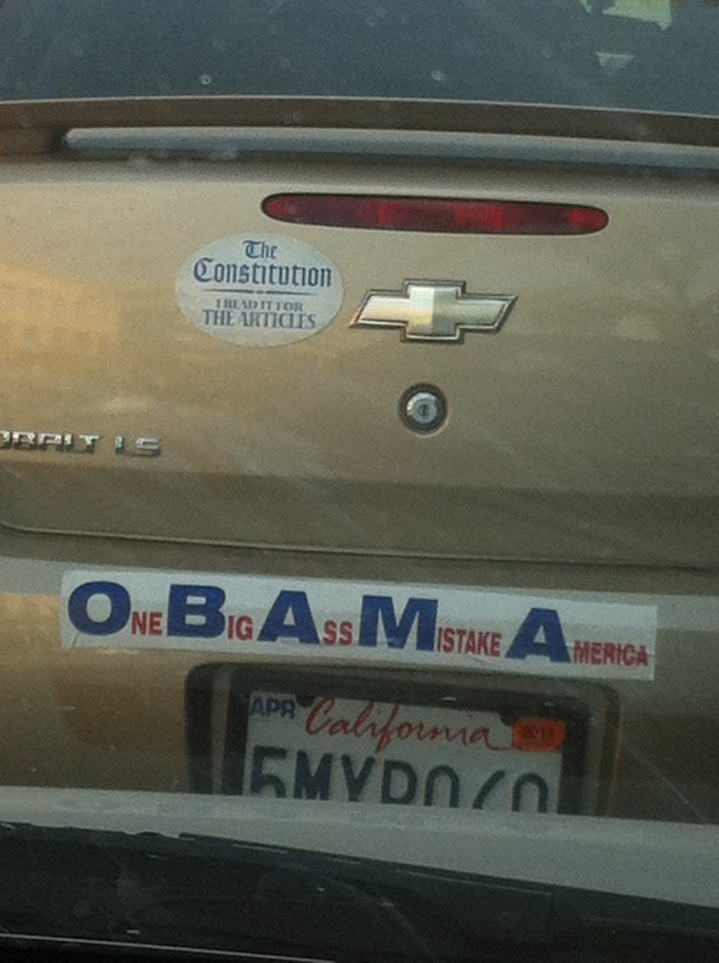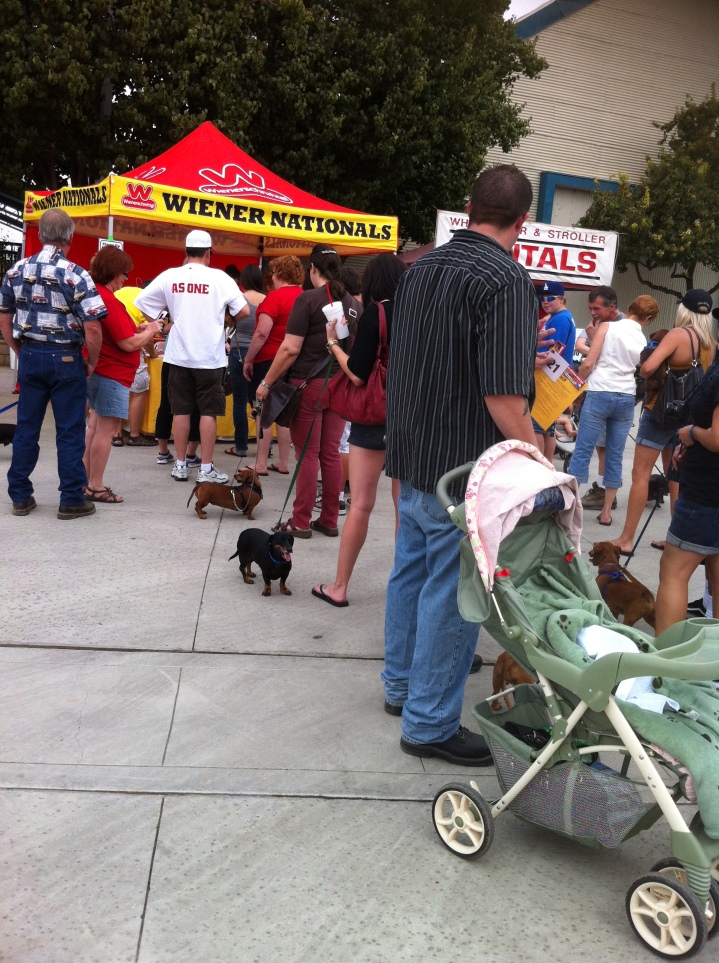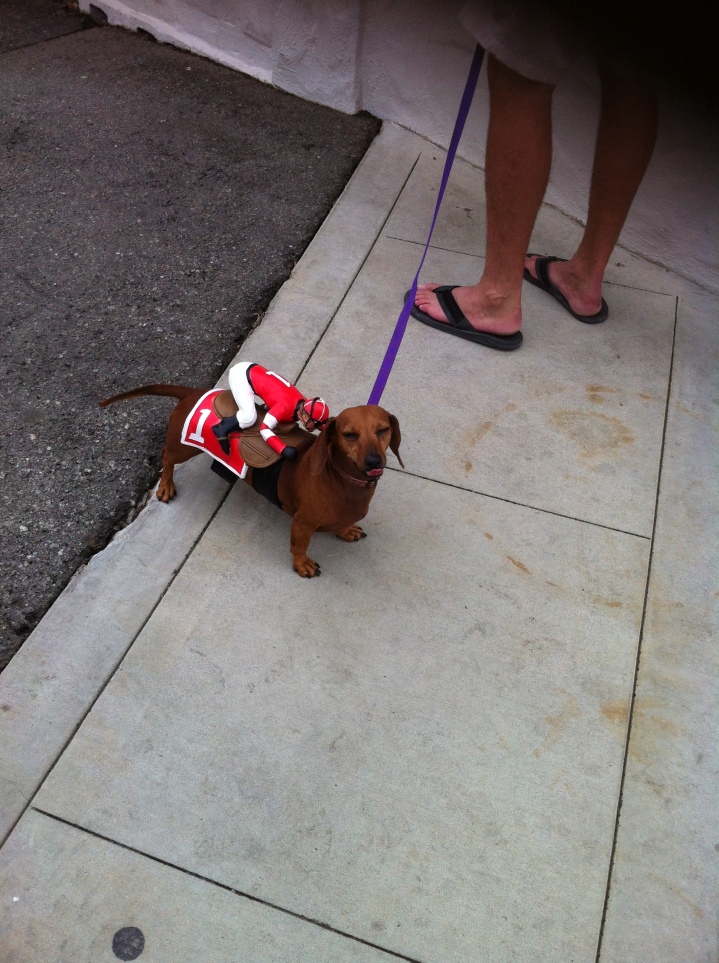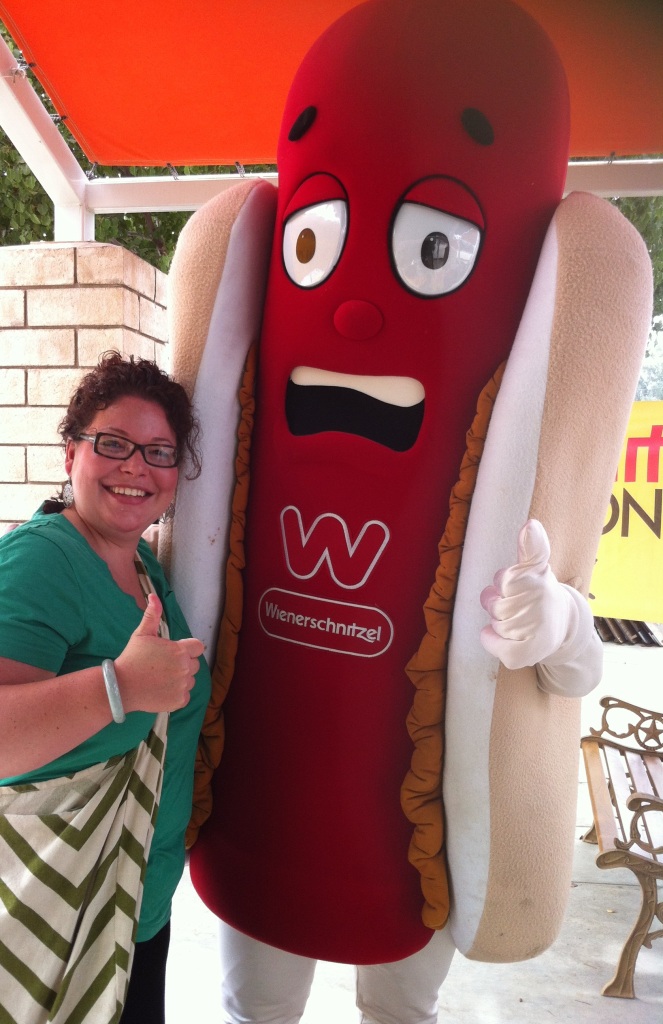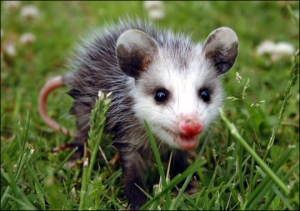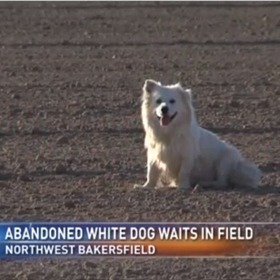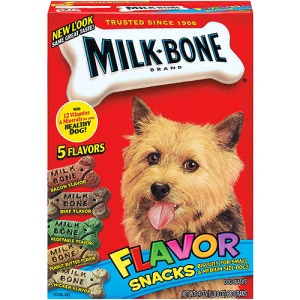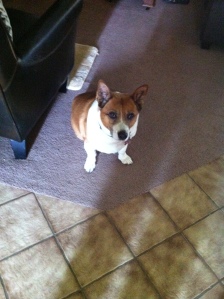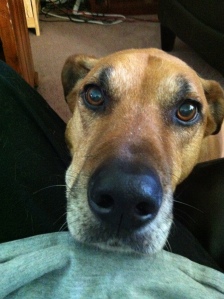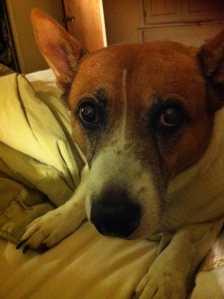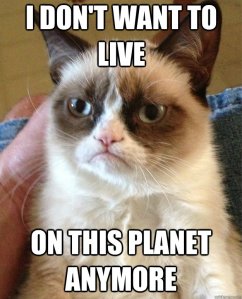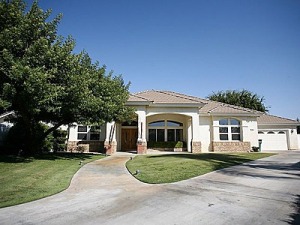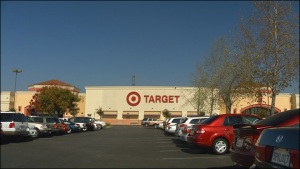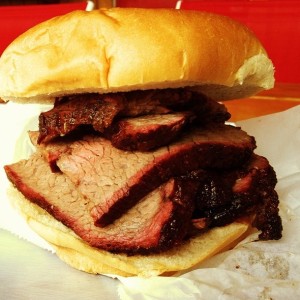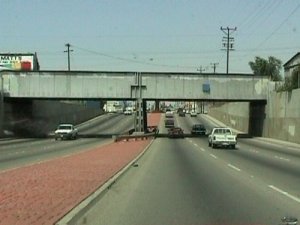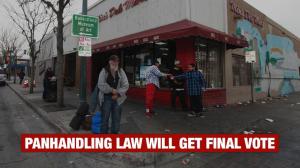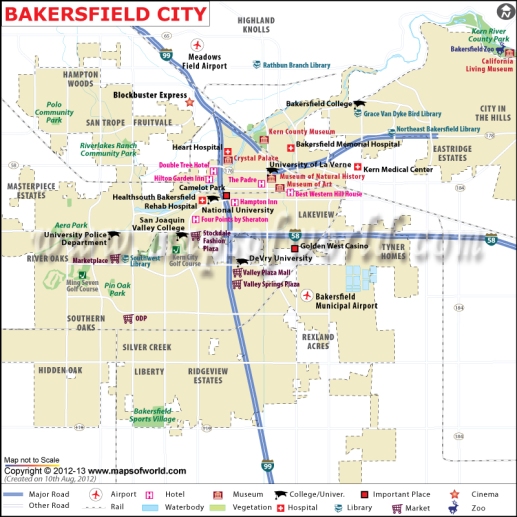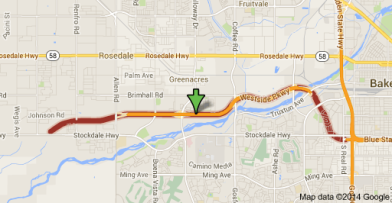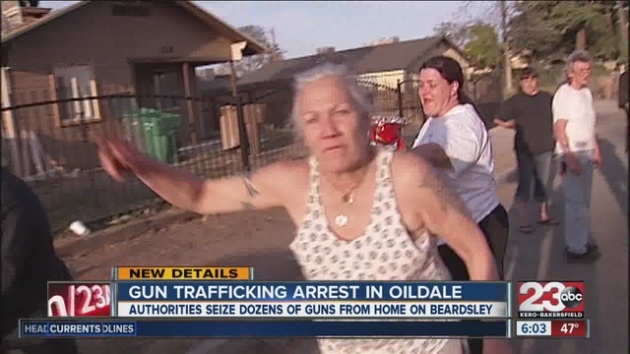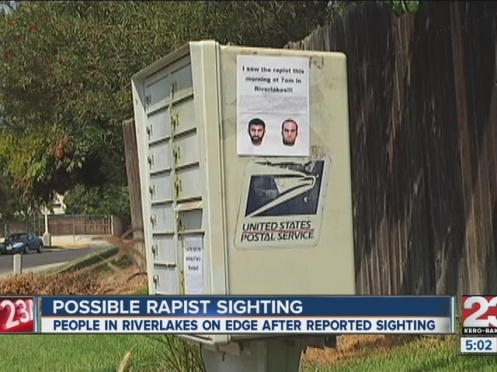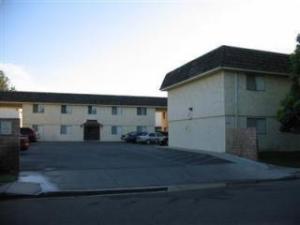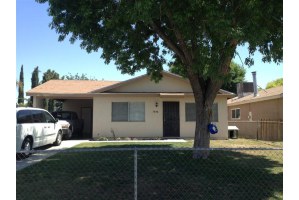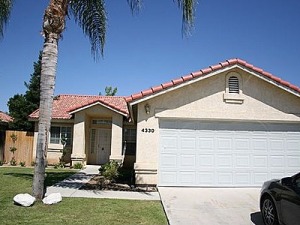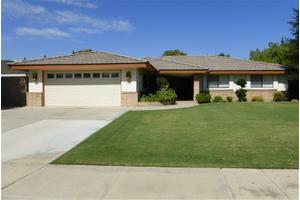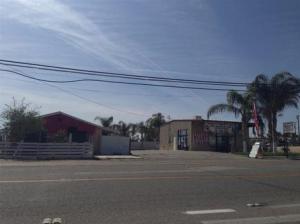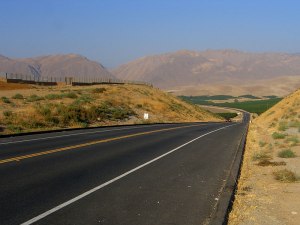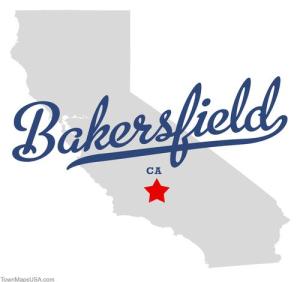If you’re interested in a crash course in Bakersfield Political Science, here’s your first text:
Off to the races!
StandardI mentioned in one of the comments that the Kern County Fair is perhaps one of the single points of common ground in Bakersfield – where people from all parts of the community come together, regardless of race, socioeconomic status, or zip code. Some can buy tickets easily, while others save for months. I visited for the first time a couple of years ago – I watched a cow giving birth and was heartily entertained by the “Wiener Nationals” (a decidedly amateur race for wiener dogs).
Dog is My Copilot
StandardI’ve always been an animal lover. I grew up in a family that brought spiders outside rather than squashing them – all of our pets were adopted/rescued and we went out of our way to try to help animals who appeared to be suffering (we drew the line at cockroaches – sorry). I remember my dad finding a baby opossum in our back yard one morning – he brought it inside wrapped in a towel. After the initial excitement, we were a little stumped as to what to do with the little creature. However, lo and behold, Orange County had a (an?) Opossum Rescue Society that came over within the hour and carted the baby marsupial away to their rehabilitation center. We were all a little surprised – but mostly impressed – that such a society even existed.
http://www.petconnect.us/county/ca?/orangecounty/rescues_wildlife_opossum/
However, when I moved to Bakersfield, I realized that not every city has the same resources for animal rescue, which may reflect on a larger issue of whether animals like cats and dogs are seen as valuable “members of the family” or merely property – or even pests. Bakersfield has one animal shelter (a “kill” shelter) that euthanizes more than two-thirds of the animals that it takes in each year (approximately 20,000 animals). Furthermore, there are only two no-kill rescues, and they’re bursting at the seams – animals are usually refused at the door because of lack of capacity.
However, the animals locked behind the gates at the “pound” are only a fraction of the stray dogs and cats roaming the streets of Kern County, darting in and out of traffic, sporting fresh injuries from recent run-ins with cars, or lying dead or dying on the side of the road. Certain areas are particularly notorious for being “overrun” with stray dogs – central Bakersfield, Delano, and Northeast Bakersfield (my neighborhood). Kids who go to school in these areas learn quickly that dogs on the playground aren’t cause for disrupting class – it becomes normal, part of the scenery.
I have a hard time driving sometimes, because I’m afraid to look too closely at objects on the side of the road. Is that a discarded blanket or a dead dog? Ever since I moved to the Northeast side of town, the odds are that it’s not a blanket.
So, what’s an animal lover to do in this town?
The answer involves a steady supply of milk bones….
and a car, a steady heart, and the patience to chase down a spooked dog who’s been running for a while. Also, the fortitude to start knocking on some neighborhood doors to try to track down the dog’s owners if it seems like the dog hasn’t strayed far. Finally, and this is tough, if the dog isn’t wearing a collar and the no-kill shelters are packed to capacity, the ability to surrender her/him to the shelter, knowing that at least there she/he will be safe from traffic, fed, and warm.
Southwest: I found a pair of dogs that had been abandoned by people who’d recently lost their house (I knocked on every door in that neighborhood with the dogs’ pictures on my cellphone). That was in the Southwest. I kept them for a while at my church – I bought them beds, toys, food, etc. and put ads in every single paper and on Craigslist. I was refused for weeks by the no-kill shelters and finally had to bring them to Kern County Animal Control. That was tough.
Central: I was picking up my car from our friend Jorge’s shop in downtown Bakersfield when I saw two little terrier-mix puppies run around the corner and dart nearly into the street. Jorge didn’t recognize them (they didn’t have collars) and they needed little cajoling to leap into my backseat. Like always, the no-kill shelters were full, so I started making calls to some of my friends to see if they could foster the dogs. I guess I should mention that I can’t bring home dogs to my house, as my oldest dog was abused and has issues with dog-dog aggression. Luckily, one of my coworkers was able to watch the dogs for a couple of days while I posted pictures, tried to get them into the rescue shelters, and tried to find people willing to adopt. After several days, however, we had to call Animal Control and bring them in to the county shelter.
Northwest: One day, in our house in the “fancy” Northwest area of Bakersfield, my husband and I heard a shuffling noise from the other room. We walked into the kitchen and found the beagle from next door standing inside our house, drinking noisily from our dogs’ water bowl. What’s more, several puppies crawled near her feet, trying to get at the water, too. They’d somehow found a way to get through our fence and through the dog door. It’s a good thing they did, because our neighbor had left town for two weeks and the dog and her young puppies had no food or water (in the middle of a Bakersfield summer). It turned out that he’d supposedly arranged for his cousin to come take care of the dogs, but the guy never showed up. Needless to say, we went to the store, bought the dogs beds, food, water, toys, and spent time each day caring for them (along with raging against our seemingly heartless neighbor).
Northeast: I saw a dog running in and out of traffic as I was pumping gas by my house. I had him in my backseat when my neighbors volunteered to foster him – that was months ago, and although he wakes me up at 6AM every day, I don’t regret picking him up.
 It’s too easy to look the other way when we see an animal trotting past us – tired, scared, thirsty. Despite being fellow travelers on this road, they’re treated as invisible, as worthless. I understand that, in a city where there already exists so much human poverty, it sometimes feels silly to complain about cats and dogs, but when we ignore the suffering of those who are most vulnerable – all those in need – we do a disservice to everyone. I think it’s time for Bakersfield to start paying attention to what’s outside our windshields – we’re missing out on so many opportunities to help each other, whether that means giving a stray dog food and shelter, or refusing to be a part of the city’s segregation – living intentionally, becoming a conscious member of the community. Because that’s how we really become a family.
It’s too easy to look the other way when we see an animal trotting past us – tired, scared, thirsty. Despite being fellow travelers on this road, they’re treated as invisible, as worthless. I understand that, in a city where there already exists so much human poverty, it sometimes feels silly to complain about cats and dogs, but when we ignore the suffering of those who are most vulnerable – all those in need – we do a disservice to everyone. I think it’s time for Bakersfield to start paying attention to what’s outside our windshields – we’re missing out on so many opportunities to help each other, whether that means giving a stray dog food and shelter, or refusing to be a part of the city’s segregation – living intentionally, becoming a conscious member of the community. Because that’s how we really become a family.
Story Hour
StandardI work at a private university that provides graduate programs in education – we work with individuals who want to become teachers and/or administrators, but who need/prefer the flexibility of evening classes. This means we’re both more flexible and more expensive than the local state university, and thus I encounter a wide range of students from diverse backgrounds. Many of them are what we call “nontraditional” candidates – not your typical 22-year-old, fresh out of undergrad. A lot of them have kids, and the majority of them work during the day. Some of them depend on federal student loans to pay their bills. They’re all hoping to find a satisfying career in education, to serve the children of Kern County, but they all have different stories.
This Friday, I have an appointment with Sharon Ramirez*. I’m helping her prepare for the California Subject Examination for Teachers (CSET), as she’s struggled to pass it for years, and she has one last chance to pass it in order to keep her job as a Special Education teacher (on an emergency permit). Sharon is originally from Delano, a small town outside Bakersfield, and she dropped out of high school at fifteen when she found out she was pregnant. She went back to school and finished her undergraduate degree in her late twenties and is determined to earn her credential and master’s degree in order to provide a stable career for her family. When I asked her if she still lived in Delano, she said, “I moved to Rosedale because I wanted my daughter to have a better life.” Rosedale is one of the white/wealthy suburbs of Bakersfield. According to Sharon, if she’d grown up there, instead of the more rural/Latino Delano, she would have had more opportunities for success.
Erica Hernandez*, on the other hand, lives on “my” side of town – 93306 – the East side of Bakersfield. When I was applying for her credential and remarked that we lived in the same zip code, she said, laughing a little, “Oh, yeah – East Bakersfield,” as if she were acknowledging an embarrassing secret. I asked whether she’d lived there long and she said, “born and raised – still live in the same house. But I’m moving soon.” Erica is an excellent student – she sailed through the credential program and has a job waiting for her this fall – on the East side, in fact. But, she’s purchased a house on the opposite side of town – in the “nicer” Northwest area that will mean a 35-minute drive to work each day.
Melanie Crandall* just had her second child and is exhausted when she gets to class. However, she is determined that she is not going to stay in the position of “teacher’s aide” forever – she wants a classroom of her own. As a Black woman, she recalls attending West High School in Bakersfield – now considered one of the most “ghetto” schools in town – and understanding the ranking system that separated students by race and socio-economic status. Rich white kids didn’t go to West. “Liberty and Stockdale were the ‘rich white’ schools,” she said. “We never associated with anyone from there. Why would we?” The only reason students would transfer to schools outside their district was usually for sports – “and they usually went from ‘good’ school to ‘good’ school when they did that.”
Some of their experiences were the same, however. As children in the Bakersfield/Delano public schools, they all went on field trips to Insect Lore (http://www.insectlore.com/bugseum), Camp Keep (http://www.campkeep.org/), and Fort Tejon (http://www.parks.ca.gov/?page_id=585). These mini-trips provided not only enrichment but a link among all students in Kern County, regardless of socio-economic status or race. Whether a student attended school in the “fancy” part of town or in the “East” side, they could all claim these experiences. And, regardless of whether they want to move to Rosedale, these three candidates have all expressed the desire to teach anywhere in Kern County, regardless of the school’s perceived status. Even Sharon, who moved to Rosedale thinking it would be a “better neighborhood,” chooses to teach in McFarland, a rural area outside Bakersfield (close to Delano, in fact) with a largely Hispanic population.
And yet….
Today a student walked into the lobby and asked if she could speak with our Field Experience Supervisor, because she was “feeling really scared about her student teaching placement.” My office is right next to our Field Experience Supervisor, so I heard the entire exchange, which went like this:
Student: “I’m just really freaking out about my placement for student teaching this fall.”
Field Experience Supervisor (FES): “We haven’t placed you yet, though.”
Student: “I know, but I’m just panicking already. I really want to be placed somewhere like Norris – you know, somewhere safe.”
Note: Norris is one of the few schools where we actually can’t place students, because it is so white, it doesn’t meet diversity requirements – no English Learners, nothing. Obviously, the student was equating white = safety.
FES: “Safe?”
Student: “Well, you know. Places like Wasco or Lakeside are just dangerous! I just need to be somewhere where I’m safe. Like Norris.”
Note: Wasco and Lakeside are, as you may have already guessed, more diverse schools. Perfectly safe. Except if you consider the presence of students of color dangerous.
FES: “I’ll need to bring this to the director.”
This was my reaction:
Yet, if the student was able to understand the diversity of voices that exist in Bakersfield, despite the segregation that continues to plague the town, she would understand that she is among people with the same dreams, the same goals – Sharon, Erica, and Melanie have different stories, but they’re driving down the same road, and this student is missing out on a great ride.
*All names have been changed.
From the Inside
StandardIn my online exploration, I stumbled upon a blog group called Bakersfield Mommies! (yes, with the exclamation point included, ugh) with the following post by SarahRae85:
http://community.babycenter.com/post/a8055075/you_know_youre_from_bakersfield_when.
Wow! My identity crisis is solved! Thanks, SarahRae85!
Well, not really. The list, in actuality, merely reaffirms the hierarchy of white, heterosexual privilege associated with high status in Bakersfield. According to the list, true Bakersfield citizenship can be ascertained when one can claim familiarity with, among other things, the following (list unedited – my comments are in italics):
- You know what “white, ming, rosedale, calloway, and panama” mean
These are (or have been in recent years) the streets in the “wealthy/white” areas of town. The author is signifying here that she’s identifying with a particular audience (read: privileged).
- When you go out of town & you see a sign saying “Union Ave” you expect to see a hooker.
While Union Avenue does have some areas known for prostitution, it also connects major areas of business/industry. Of course, it’s nowhere near the streets named above. Furthermore, the women she identifies as “hookers” are part of the subsection of the population deemed “undesirable” and thus are preferably invisible to her audience. The local news invariably reports Union Avenue as the singular site for Bakersfield’s prostitution “problem,” although such oversimplification serves only to satisfy the public that the fuzz is cracking down on “sex crimes.”
- Rosedale is a world all its own.
Rosedale is a white/wealthy suburb that boasts the “good schools” (where Urban Dictionary claims all the hot/snobby girls attend). For many people in Bakersfield, this is their entire world.
- Rosedale ALSO needs to be turned into a sitcom. Laguna beach doesnt have anything!
I have no words.
- You remember the TWO times in the last 25 years that it snowed in bakersfield, and you remember everything you did that snow day.
This provides context that the author is, indeed, an insider – a true Bakersfield citizen. I, alas, can only remember hail.
- You claim to hate LA but go there at least every other month.
This is another claim to privilege, as Los Angeles is frequently cited as the place to visit for “real” stores like Nordstrom and J Crew.
- You have ever debated the merits of water skiing at Lake Ming versus Buena Vista.
Someone in the comment section wrote, “Ewwwwwwww, skiing at BV lake!!” I believe this is code for: Buena Vista Lake is for poor people.
- You have to explain to friends from out of town what animal a tri-tip comes from.
This is actually true. I had no idea what this meat product was until I moved to Bakersfield. Now I encounter it everywhere.
- You think beans and salsa go with everything.
This is an obscure reference to Basque culture. There are some people with Basque ancestry in Bakersfield and thus we pay homage to the tradition via large family-style servings of beef tongue, beans, tri-tip, potato salad, and salsa.
- Anywhere that takes longer than a 10 minute drive is way too far.
Except if you live in the parts of town that aren’t accessible by the lovely new freeway, and then everything takes 45 minutes. I live in the Northeast, and it takes me at least 30 minutes to get to work. Not that I mind – I moved here from Southern California, where that’s a walk in the park.
- You have to “explain” to someone about Beach Park.
I had to ask my husband about this one (he’s lived here longer than I have). Apparently, this is a coded reference to the supposed gay activity that frequently occurred there – horrors! That the author feels the need to put “explain” in scare quotes shows her heterosexism (not unusual in Bakersfield – I saw a “God made Adam and Eve, not Adam and Steve” bumper-sticker at Cal State University, Bakersfield).
- You complain about how boring Bakersfield is, but still make fun of people from Delano, Taft and Tehachapi.
Delano is a community comprised mostly of agricultural workers – that SarahRae85 confidently boasts about “mak[ing] fun” of them demonstrates her sense of entitlement and superiority. Ironically, Delano’s schools outperform Bakersfield’s every year.
- You know what an 08er is, where the Dale is at, and what a Dalion is.
This is a reference to the “white trash” section of Bakersfield – stereotyped as a place consumed by meth, white supremacy, and vicious pit bulls. Interestingly, more people seem to be willing to publicly claim residence in “oh-eight” than in zip codes populated by people of color (93307, 93305). Whiteness is still privileged – even in mockery – in this town, where South High’s students are still officially “The Rebels” (although their school symbol is no longer the Confederate flag).
Touring Bakersfield Online
AsideI did a little online exploring this week to find out how Bakersfield is portrayed by the media, to “outsiders,” and among its residents. While the official coverage – by the newspaper and the Visitors Bureau – is universally positive (save for the occasional blurbs about minor scandals or assaults in the “less desirable” parts of town), there are self-deprecating blog posts written by current and former residents, as well as a scathing entry in the infamous UrbanDictionary.com. What became apparent in my search was that, despite the many jabs against the city – for its air quality, its lack of good shopping, its redneck citizenry – an entire subsection of Bakersfield’s cultural dynamic is ignored. Namely, its areas of poverty and racial segregation.
The Bakersfield Visitors Bureau paints an exciting portrait of the city as a travel destination. Here’s the video posted on their website:
Note that the restaurant portrayed in the video is considered the “fanciest” one in town, and the rest of the buildings shown are either in wealthy neighborhoods or are cropped to eliminate any traces of surrounding poverty (as in the case of the convention center downtown). Furthermore, residents are discouraged from swimming in the featured river, as people drown in its treacherous currents every summer. Though boasting that there’s always something “more to explore,” the website fails to document the major areas of the city in which poverty and crime have had the biggest impact and instead turns Bakersfield into a destination for the consumption of tourist adventure.
On Urban Dictionary, Bakersfield is described as a “pretty horrible place,” due to the air quality, meth, singular shopping mall, and the “Mexicans that hop the border and invade town [sic] then clog the streets protesting their ‘deserved rights’ when they are not even citizens.” Wow. The “definition” then goes on to describe how the city can be understood/divided according to high school:
South High (southside), East High (eastside) {don’t walk the streets at night because you WILL get stabbed by a mexican gang}, North High (north) {A.K.A. Oildale- which isn’t a city in itself, just a name for the trailer park/white trash part of town], West High (west) {if you want to get shot, eat at a taco bell}, Ridgeview High {out in the middle of fucking nowhere}. Then there are the snobby, rich schools around the Northwest/Southwest part of the city such as Centennial High, Liberty High, and Stockdale High. Liberty is home to the hottest, most shallow kids in the whole city.
While this account does address the racial issues that stratify the city, the blame is misplaced. This anger (racism/class hatred directed at the migrant workers/poor/homeless that comprise much of Bakersfield’s population) is a constant refrain. The man who drove the tow truck when I had a flat tire told me he refuses to give money to the homeless because he believes they refuse to work hard. The woman in line next to me at the salon told me she thinks Donald Sterling should be left alone, since his racist comments were “made in the privacy of his own home.” A woman business owner recently informed me that she believes people “are just lazy” and shouldn’t be given any “extra breaks.”
Then there’s this:
From complete obfuscation to blame, the attempts to remove the “undesirable” population – or at least make it invisible – are similar to colonial narratives that aim to both entice tourists and blame problems on the “native” populations (e.g. India during the British Empire).
Streets of Bakersfield
VideoBroadcast on our local news station…
Unlocking the Codes
Standard“I don’t know where to start,” I remember telling my now-husband, as I sat in front of my computer in Orange County, trying to search for apartments online so he – living in Bakersfield already – could do the leg work of finding us a place to live once we got married. I was still working in Orange and wasn’t going to be able to help with the search in person – my contribution was providing him with potential addresses I’d found online. “Write down these zip codes,” he told me. “Just search for places in 93309, 93304, or 93311.” I later learned these were the zip codes of the Southwest area of Bakersfield, considered in 2003 one of the “nice/safe” areas to live. Until then, I’d never considered a city to be segregated by zip code.
In 2003, Bakersfield’s Southwest region was considered the “nice” area – the suburbs (93309, 93313, 93311). Now, however, this dynamic has changed again, and it’s the Northwest (93312) that’s considered the “good” place to live, where all the new building is happening, where the lush parks are appearing, and new schools with starkly patriotic names are opening (Independence, Patriot, Freedom, etc.).
Despite the lack of connecting highways between the East and South sides of town – what freeways do exist are crumbling and decrepit – a new highway was just built to serve the residents of the Northwest who commute downtown for work: the Westside Parkway.
It’s interesting to ask people where they live and hear them respond via zip code: some are proud, others ashamed. There’s an entire subculture devoted to the “White Trash” reputation of the “0-8-ers” of Oildale, as the area is called. Though there are great restaurants and neighborhoods in Oildale, the overall stereotype is generally one of meth use/production, pit bulls, and white supremacy.
The kind of reporting that occurs in Bakersfield portrays certain areas as particularly “dangerous” or crime-prone and others as flourishing (when a crime occurs in the Northwest, for example, it’s treated with shock and outrage). When a suspected rapist was assaulting women near the Riverlakes golf course in the 93312 zip code, there were multiple news updates per day regarding possible sightings. Yet, rarely do the domestic/sexual assaults that occur in the less “prestigious” zip codes get any follow up in the media, if they’re mentioned at all.
Ultimately, my husband and I landed in 93304 for our first apartment together. Technically, this is more “South” than Southwest,” and we were really in what was by then considered the one of the “less desirable” sections of the city. We were in walking distance to a Walmart and were close to the 99 freeway and a laundry-mat, which I found extremely convenient as a newly-married and extremely poor 22-year-old. Our rent was $500 per month, and for that princely sum, we lived in a 2-bedroom, upstairs apartment with a garage underneath. Pure luxury to us!
When we adopted our dogs, we knew we had to have a house with a yard for them to play in, so we moved to a house in 93309 – a step “up” in Bakersfield, though still not considered “fancy” by any means. Lawns were regularly used as driveways on this street, though everyone was friendly and the neighbor children liked to throw chicken nuggets over their fence to our dogs (much their delight).
A friend of my husband’s had a house for available in the Northwest (93312) that they were willing to rent to us for a good price, so this was our opportunity to live among the elites! Alas, our time in the sun was short lived, as the owners decided to sell the house after a year and gave us only 30 days to pack our things and find a new place to live. Goodbye horse trails and fancy Target.
In only 30 days, we had to find a house that was both in our budget and would accept 3 dogs. We found ourselves back in 93309. The house was old, but in decent shape, and it had a pool (a blessing in Bakersfield summers). What we’d come to realize later was that it was also infested with rats and the pool would be gummed with the husks of roaches each summer, making the idea of swimming unthinkable. We’d sit awake at night, listening to the scrabbling of rodents in the walls, and count down every last penny until we had enough for a down payment on a house of our own.
We scrimped and saved in order to escape the rat house (I’m serious – we were finding droppings in every nook and cranny in that place, and the rental agency would do nothing to help us!) until we had a down payment. We chose a house in a zip code I’d never even visited – 93306, the Northeast. It’s pretty far out – it takes me about 20 minutes to get to work in the morning, and I’m not sure exactly how to categorize my neighborhood. When I tell people I just bought a house, they respond in excited tones; when I tell them it’s in 93306, they suddenly become less enthusiastic. Because, while there are new developments out here, it’s not all new and pretty. This is where a lot of the old schools are – where parents don’t want to send their kids. I drive by boarded-up stores and a cemetery on my way home – although I get to see the sun setting over the canyon, too.
Of course, there are places in Bakersfield I’ve yet to “decode” – there’s Cottonwood (93307), a shantytown notorious for its poverty. There’s downtown (93301), where the homeless gather despite a growing movement to criminalize panhandling. And there are pockets of “good” and “bad” that are relative to the eye of the observer in each zip code – certainly each home we’ve inhabited, regardless of its geographical location, is treasured for the memories contained within its walls.
Bakersfield Irony
Image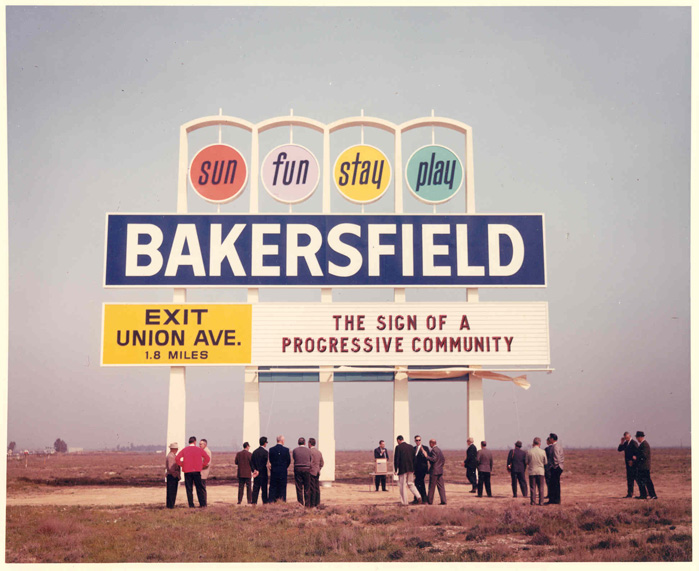
Insider/Outsider
StandardBakersfield is an insular community – more than once I’ve heard the phrase “it’s all about who you know,” and there are family names that are widely recognized as powerful, multi-generational. Yet, many live on the margins – both socially and economically. Bakersfield has a large homeless population and provides little in the way of support. This insider/outsider dynamic – who is considered “part” of the community – is central to my question of “belonging” to Bakersfield. As described by James Clifford, “the representational challenge . . . is the portrayal and understanding of local/global historical encounters, co-productions, dominations, and resistances” (24). To understand (and describe) Bakersfield, I’ll need to be able to not just portray singular transactions that make up my daily experience, but explore the tensions between my role as both insider (as one who has lived in Bakersfield for 11 years) and outsider (who still views it through the lens of “visitor”).
In Catherine Watson’s “Where the Roads Diverged,” she describes how she’d “been looking for a home all [her] life – for the place [she] really belonged, the place where [she] should have been born” (278). She finds this sense of home on Easter Island, a Polynesian island in the Pacific. As she narrates her experiences, she frames this “homecoming” in terms of possession. The island is focused on her alone (“it was as if the island had been waiting for me, all that time” (278)) and she considers the island’s famous statues “already old friends” (281). This sort of travel narrative, in which the sense of home ignores the experiences of the “insiders” and assumes immediate ownership of the geographical/cultural space, feels off-balance to me, like walking into a stranger’s house and making breakfast.
I am both an insider and an outsider – I want to both honor and critically examine the social/cultural norms of Bakersfield while also learning from the other travelers (those who have always lived her and those who have just arrived). This, I think, is the new travel narrative – one that can provide fresh insight into a community defined by its stereotypes while also exploring the writer’s own identity, bias, and effect on the community. This type of “postmodern literacy” (Clark 1) provides an opportunity to both produce and transform the idea of self, which will allow me to transition from “observer” to “participant” in my daily travels in Bakersfield.
- Clark, Steve. Introduction. Travel Writing and Empire: Postcolonial Theory in Transit. Ed. Steve Clark. London: Zed Books, 1999. 1-29. Print.
- Clifford, James. Routes: Travel and Translation in the Late Twentieth Century. Cambridge: Harvard University Press, 1997. 1-46. Print.
- Watson, Catherine. “Where the Roads Diverged.” The Best American Travel Writing 2008. Ed. Anthony Bourdain. Boston: Houghton Mifflin Company, 2008. 277-284. Print.

